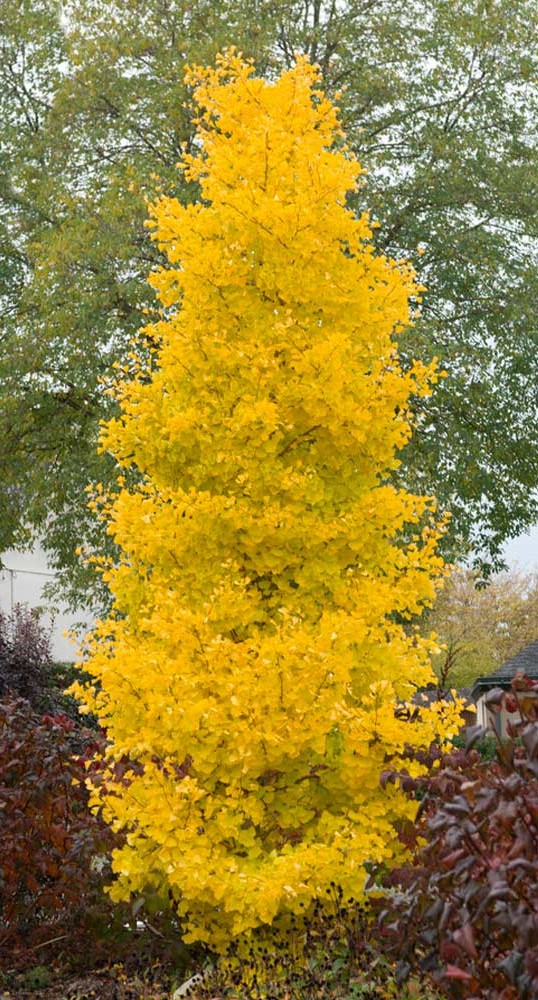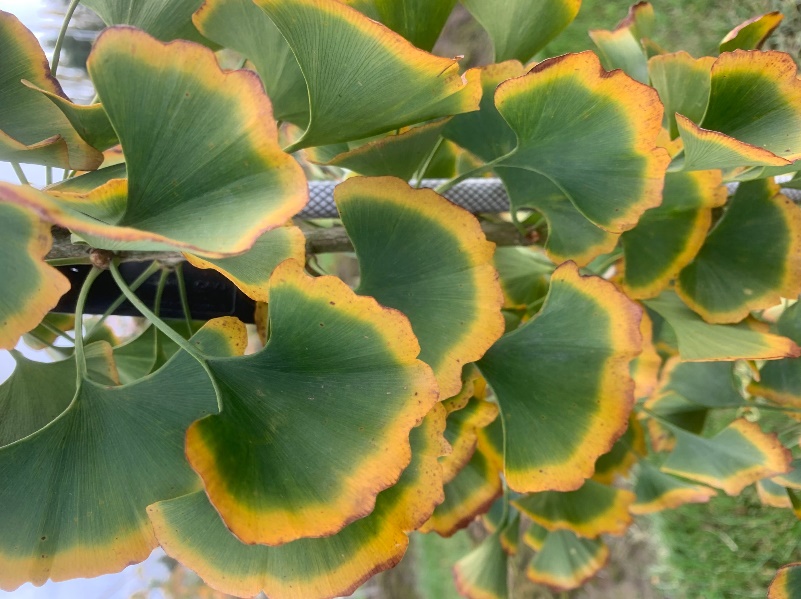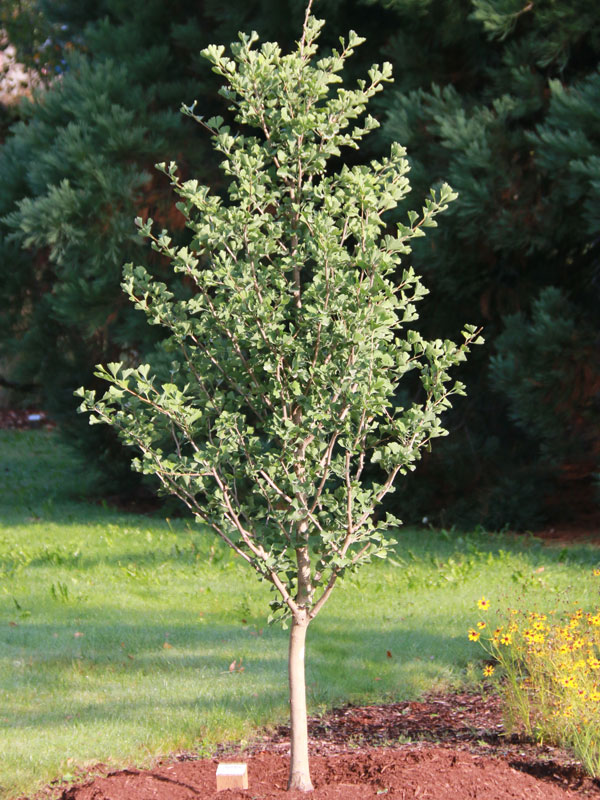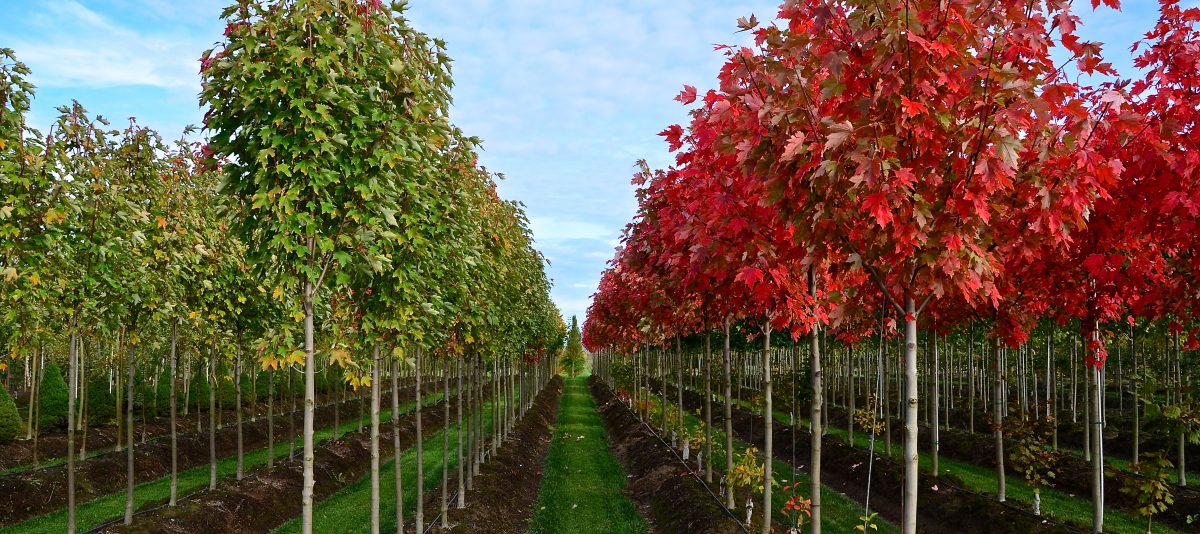Ginkgo biloba
‘Goldspire™’, ‘Grindstone’, and ‘Sky Tower™’

There is likely no tree more recognized or bullet-proof on the planet than the Ginkgo, and for good reason. It was here before the dinosaurs roamed the Earth, survived the Pleistocene glaciation period, was found later in a restricted area of China, and now a living fossil that we still enjoy. Not surprisingly, in our search for the perfect urban tree, the ginkgo has always been in the running. Why? Because they are tolerant of a wide range of temperatures, will grow in most any soil, are tolerant of air pollution, drought, freezing temperatures, fire, heavy metals, low salt levels, and ozone. In addition, the fan shaped leaf is beautiful, like no other, and the fall yellow color is spectacular! The literature notes susceptibility to stem rot and leaf blight but is seldom seen.
Personally, the Ginkgo tree has always been one of my favorite trees, but frustratingly slow to grow. Urban Foresters were always warned to plant only the male, as the smell of the female fruit can be so disgusting. The industry directs us to grow only male cultivars to avoid the fruit. However, from research and my own experience, males periodically have the ability to send out a limb that produces fruit. I personally have witnessed Princeton Sentry Ginkgo cultivars, in our nursery, at the Morton Arboretum, and other locations, all presumably confirmed male clones, but with an occasional fruit. Remember the great line in the Jurassic Park movie, “Nature finds a way”. It is no wonder that Ginkgo trees have survived for millions of years.

While growing many common Ginkgo male cultivars, including Princeton Sentry, Autumn Gold, Golden Colonnade®, Magyar, Presidential Gold®, and others, we have not always seen the uniformity that we expect and see in other species cultivars. Although Presidential Gold® has been the most promising of this group. Is it possible that they lack a strong gene trait to influence the characteristics of these selections, or is the original morphology of the seedling Ginkgo so strong that the tree is trying to grow back to its original self?

In recent years we have come across other cultivars that show more uniformity of form and structure, specifically ‘Goldspire™’, ‘Grindstone’, and ‘Sky Tower™’ (possibly all the same tree as the literature is confusing). These appear to have the most reliable branch structure for any ginkgo that I have seen, such as branches evenly spaced along a central leader all the way up the stem. Frankly, I was blown away when I first saw these three, compared to other cultivars we have grown,but their ultimate mature size is still in question. The ‘Grindstone’ is a very tall tree, as so well illustrated in an online video. However, the ‘Goldspire™’ is listed to mature at anywhere from 15 to 45 feet. And ‘Sky Tower™’ is said to mature at 15 to 20 feet. Most important is our observation of the evenly space branch structure and more reliable form on these “three” cultivars.
Ginkgos can be frustratingly slow to grow, but the ultimate size may not matter to some. In youth, they have to be staked, as their trunk can be like rubber, and early careful pruning will pay off in its ultimate form. They have a fat, fleshy, prolific root system and transplant well but may take a couple of years to become established. Have patience,they respond well to high nitrogen and regular limestone applications and appear to prefer to grow better in the heat.
As climate changes and new insect and diseases challenges appear, I doubt there will be a better choice than planting a Ginkgo in almost any location.
As always, let me know your experience with these trees.
Jim Barborinas
ISA Certified Arborist #0135
ASCA Registered Consulting Arborist #356
Certified Tree Risk Assessor #PNW-0327
CLICK HERE FOR MORE TREE PROFILES
